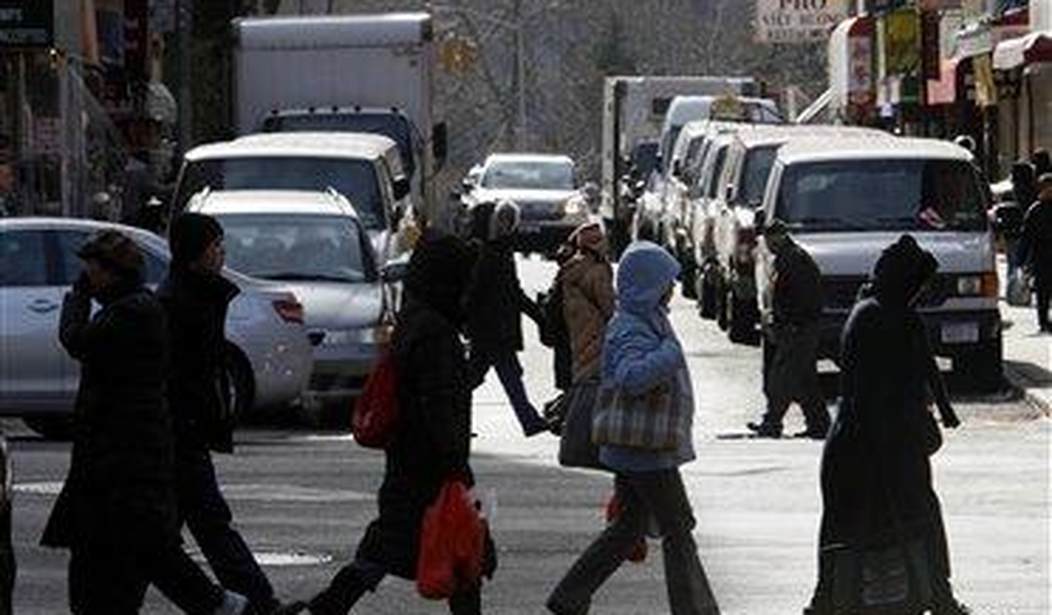Northern residents moving from blue states to the Sun Belt is not a new phenomenon. But even as northerners migrated to states such as Arizona, Texas, Florida, and Louisiana, there was still healthy population growth in states like New York, New Jersey, and Illinois.
That simply doesn’t hold true anymore. For the first time, blue states such as New York and Illinois lost population. And the Sun Belt’s blue state of California led the way in population loss.
“Millions of people moved during the pandemic, driven by the opportunity to work remotely, the desire for more space, and better affordability,” Nadia Evangelou, senior economist for the National Association of Realtors, wrote on Jan. 30. “Twenty-six states experienced an influx of people, with more people moving in than out, while twenty-five states lost movers … California (-343,230), New York (-299,557), and Illinois (-141,656) experienced the largest net domestic outmigration.”
This isn’t news, either, ever since the last census numbers came out. In The Atlantic, Isabel Fattal writes: “So what does this mean for blue states and their superstar cities? They’re far from dying, of course: ‘New York City isn’t some dystopian wasteland where no one can see their future,’ Jerusalem [Fattal’s colleague Jerusalem Demsas] reminds us.”
The “superstar power” of New York City is that it allows liberals to engage in superstar denial.
Fattal continues: “But evidence of a growing exodus does mean cities that have long been sitting comfortably need to put in some work to retain their residents—by, for example, improving basic amenities such as public transit.”
Are people really moving out because the subways and buses are lousy? What planet do these people live on?
Jerusalem took a close look at Florida and New York, which together are a paradigm of a broader national trend of migration from blue states to red states. She found that the cost of housing is likely the single greatest factor behind the shift. “The top 10 metro areas for unaffordability are a sort of who’s who of Democratic cities: Los Angeles–Long Beach–Anaheim tops the list, with New York–Newark–Jersey City rolling into the sixth spot as the first non-California metro,” she writes. The rise of remote work in the pandemic has also meant that one of New York’s main superpowers—“its gravitational pull on workers,” as Jerusalem puts it—has been weakened.
Workers have defied the “gravitational pull” of New York for a couple of decades. Wake up and smell the coffee. There are now more nonfarm jobs in Florida than there are in New York. That should tell you a lot about New York City’s “superpowers.”
Related: What’s With the New Statue at One of New York City’s State Courthouses?
Yes, but blue-state cities have something that conservative red states don’t have — they’re “inclusive!”
And there are some selling points that more affordable red states might never be able to offer. “A healthy city attracts wealthy, middle-, and working-class people; it pulls newcomers into its orbit while leaving room for natives,” Jerusalem writes. “I don’t have a lot of faith that the Republican regimes now attracting Americans will be invested in this type of inclusive growth.” As Jerusalem notes, “We’ve seen these states become hostile to LGBTQ rights, educational freedom, voting rights, racial equality, and more.” This is true in Florida, where Governor Ron DeSantis’s anti-critical-race-theory legislation is forcing professors to change how they teach.
In short, the lack of affordable housing in blue-state cities means that some Americans have to “choose between liberal values and financial security,”
I don’t think that a liberal’s idea of “LGBTQ rights, educational freedom, voting rights, or racial equality” are huge selling points for blue cities and will cause people to flock to them despite the high taxes, high crime, and low quality of life. The only exceptions are if you are upper middle class or wealthy. Then you can take advantage of the admittedly superior museums, art galleries, restaurants, and other playgrounds of the rich and well-off.
But I pity those who are stuck in those blue cities and are trying to get out.










Join the conversation as a VIP Member